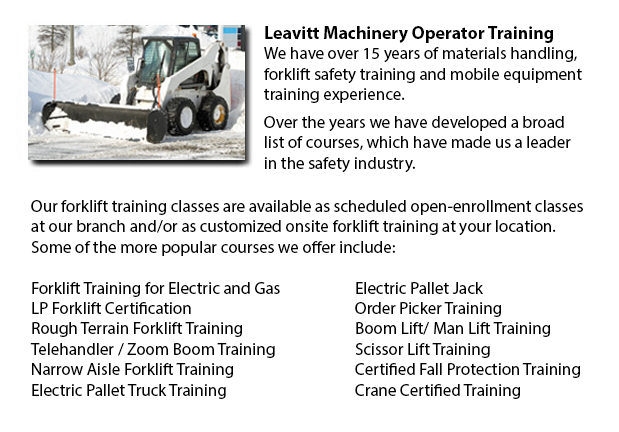
Skid Steer Ticket Markham - The lift arms on the skid-steer loader are located alongside the driver together with pivots behind the driver's shoulders. These features makes the skid-steer loader different than the conventional front loader. Because of the operator's closeness to moving booms, early skid loaders were not as safe as conventional front loaders, particularly in the operator's entry and exit. Modern skid-steer loaders now have numerous features in order to protect the driver including fully-enclosed cabs. Similar to several front loaders, the skid-steer model could push materials from one site to another, is capable of loading material into a truck or trailer and can carry material in its bucket.
Operation
Usually a skid-steer loader can be utilized on a job location rather than a big excavator by digging a hole from the inside. To begin with, the skid-steer loader digs a ramp leading to the edge of the desired excavation, and next it utilizes the ramp to excavate material out of the hole. As the excavation deepens, the machine reshapes the ramp making it steeper and longer. This is a remarkably useful technique for digging underneath a building where there is not sufficient overhead clearance for the boom of a large excavator. For instance, this is a common scenario when digging a basement below an existing building or house.
The skid-steer loader attachments add much flexibility to the equipment. For example, traditional buckets on the loaders can be replaced attachments powered by their hydraulics consisting of snow blades, cement mixers, pallet forks, backhoes, tree spades, sweepers and mowers. Some other popular specialized attachments and buckets consist of wood chipper machines, grapples, tillers, stump grinder rippers, wheel saws, snow blades, trenchers, angle booms and dumping hoppers.
History
The front end 3-wheeled loader was invented in nineteen fifty seven, by Louis and Cyril Keller in their hometown of Rothsay, in the state of Minnesota. The Keller brothers made this machine so as to help mechanize the method of cleaning in turkey barns. This machinery was compact and light and included a rear caster wheel that allowed it to maneuver and turn around within its own length, enabling it to execute the same work as a conventional front-end loader.
In 1958, the Melroe brothers of Melroe Manufacturing Company in Gwinner, N.D. purchased the rights to the Keller loader. They hired the Keller brothers to continue refining their loader invention. The M-200 Melroe was actually the outcome of this particular partnership. This particular model was a self-propelled loader that was introduced to the market in 1958. The M-200 Melroe featured a 12.9 HP engine, a 750 lb lift capacity, two independent front drive wheels and a rear caster wheel. By nineteen sixty, they replaced the caster wheel together with a back axle and introduced the very first 4 wheel skid steer loader which was known as the M-400.
The term "Bobcat" is utilized as a generic term for skid-steer loaders. The M-400 immediately after became the Melroe Bobcat. The M-440 version has rated operating capacity of 1100 lbs powered by a 15.5 HP engine. The business continued the skid-steer development into the middle part of the 1960s and introduced the M600 loader.
-
Crane / Overhead Crane / Self-Erect Crane / Truck Mounted Crane / Hydraulic Cranes Training in Markham
Bridge cranes or overhead cranes are a kind of industrial material handling crane making use of a hook and line apparatus that runs on a horizontal beam running along two widely separated rails. Many overhead cranes could be seen inside a long factor... More -
Manlift Ticket Markham
Manlift Ticket Markham - The Manlifts and Elevated Platforms program provides training on the regulations, rules and correct application of safe operating procedures and work practices involved in everyday activities for individuals who work with thi... More -
Aerial Lift Train the Trainer Markham
Aerial Lift Train the Trainer Markham - The Aerial Lifts Train the Trainer Certification Program will teach trainers how to effectively train operators in safe industrial mobile equipment operation. Trainers are given in-depth instruction on aerial l... More -
Loader Operator Training Markham
Loader Operator Training Markham - Loader Operator Training - Within North America, lift truck operator training is required to be able to prevent workplace injuries and accidents. Certain forklift training would be provided to be able to offer forkl... More -
Aerial Boom Lift Ticket Markham
Aerial Boom Lift Ticket Markham - Aerial lift trucks can be used to accomplish many unique duties done in hard to reach aerial spaces. A few of the duties associated with this style of jack include performing daily repair on buildings with high ceili... More -
Boom Lift Operator Training Markham
Boom Lift Operator Training Markham - The cherry picker work platform is a type of work platform, that will usually have a bucket or platform at the hydraulic lifting system's end. The machine is likewise called a boom lift, man lift, hydraladder or... More -
Boom Lift License Markham
Boom Lift License Markham - Just fully qualified individuals must operate an aerial boom lift. Qualification can be obtained through a combination of classroom sessions and practical training with the particular kind of aerial lift that will be used... More -
Telehandler Training Courses Markham
Telehandler Training Courses Markham - The employer has the responsibility to make certain that their workers are trained to work proficiently with telehandler machines. The staff have to be assessed for their skill to utilize the equipment. If defic... More

Forklift Training Markham
TOLL FREE: 1-888-254-6157
Markham, Ontario
forklifttrainingmarkham.com
Email Us
About Us


